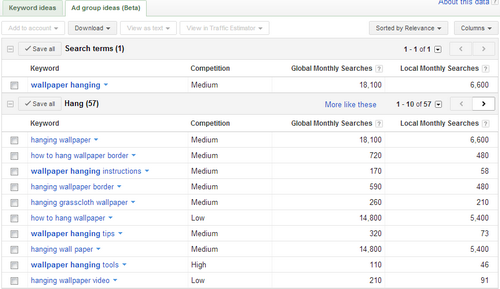
What Is Content Marketing?
Content marketing is a catch-all phrase to describe the use of
content to attract people, convey marketing messages, and lead people to
take a desired action.
One obvious example is a blog which provides content demonstrating
our specialist knowledge in a given niche. We are sharing information,
and we do so for free, however our underlying agenda is to engage people
in order to sell our professional services or products, or our message.
Why Adopt A Content Marketing Strategy
Conventional marketing approaches, which may involve publishing sales
copy, as seen in brochures, or on landing pages, don’t tend to provide
information of high value. This type of content is usually a
description or depiction of a service or product, and little more. It is
disposable.
Content marketing is about creating and distributing genuinely
valuable information, that remains valuable over time. It is less direct
than conventional marketing, but can be considerably more effective, as
many people are put off by low-value sales pitches.
In a sea of information noise, valuable content stands out. It gives us more opportunity to engage customers.
Content marketing can be cost effective. If we run a PPC campaign, we
may budget $x per week, but we know that when the spend stops, so does
the traffic. By contrast, if we spend the same amount producing and
marketing a piece of content, we may receive ongoing visitors over time
with little or no additional cost per visitor.
The Middle Man Is Disappearing
Everyone can be a publisher.
The invention of the printing press changed the world. It enabled the
mass production of books, which up until the 1400s had been the domain
of scholars. Anyone with access to a printing press became a publisher,
and could spread their information far and wide, so long as they had
access to a distribution network.
Publish. Distribute. Profit (or whatever your aim happens to be).
The Internet was an even greater invention. Not only can we publish,
but we can distribute to everyone else in the world, so long as they
have an internet connection, at the touch of a button. The middle-man
is being disintermediated. The third-party publisher is becoming
increasingly obsolete.
These people used to be the gatekeepers. The economics of
distribution served as a barrier to production, even if you did have
access to a printing press, or typewriter. As a result, there was a lot
less published content in the past than there is today. It is now
estimated that the internet consists of 5.7 terabytes of content, and it
is growing rapidly every second.
Given there is so much content being produced, and only so many
humans with limited time to read it, it is clearly not enough to just
publish and hope people will come. Instead, we must devise strategies to
actively market content in order to fulfill our business objectives.
What Is Content?
Content is whatever you choose to create.
In terms of content marketing, it is content an end user will find
valuable. The content you create should be the content your chosen
audience will most likely respond to, and engage with.
Many people assume that they should create content first, then seek
an audience. However, the most effective content marketing finds an
audience first, and then works backwards to create content that meets
audience demand.
Devising A Content Marketing Strategy
There are two parts to content marketing:
- Creating appropriate content
- Getting your content seen
When devising your content marketing strategy, it’s a good idea to
think of this process back to front. First, establish the market demand
for the content, then create the content to supply that demand.
You can gauge demand by using keyword research. If you’re familiar
with this topic, feel free to skip this section. If keyword research is
new to you, then you’re about to discover one of the most powerful
techniques in marketing.
Keyword Research
We start by gauging existing demand.
A great way to do this is to use a keyword research tool. There are various keyword research tools,
and they all operate in much the same way. They collect keyword search
data i.e. the keywords people use to search on search engines and count
how many times people use certain keyword phrases. The aim is find
existing streams of keyword traffic that relate to your niche.
You then build content around these keyword terms, thus satisfying demand you already know exists.
Step One: Business Analysis
The first stage of keyword research doesn’t involve a keyword
research tool. The first step is to clearly define your niche and
potential customers.
Imagine we’re running a wallpaper hanging business. This business has
determined their customers are people who have already purchased
wallpaper, or will soon do so from another supplier, but want to know
how to either hang it themselves, or get someone to do it for them.
This wallpaper hanging service makes money by selling people their
hanging service, or by selling them tools to get the job done
themselves. These tools include seam rollers, brushes, pasting tables
and instructional e-books and DVDs.
It’s important to be clear about what you offer, who your customers
are, and what you want them to do. Once you have this clear in your
mind, it makes it much easier to choose the right keywords. Also, you
won’t waste time and money on keywords that won’t result in the action
you desire.
For example, there wouldn’t be as much value in targeting terms such as “designer wallpaper” as our example business does not
sell wallpaper.
Content is time consuming and expensive to create, so spending a
little time on business analysis is time well spent! Brainstorm a list
of keywords your customers might use. Look at your competitors sites for
inspiration. Once you have a list of your chosen keywords terms…
Step Two
Log into Google Keywords.
Create an Adwords account, or if you don’t wish to create an account,
provide the type in characters. In the “word or phrase box”, enter a
keyword from your list.

Google will show you your keyword term, plus related keyword terms,
and give you an idea of how many times people have searched for each
keyword term.

As we can see from this result, there are a number of keyword terms
that would provide a great basis for our wallpapering businesses content
marketing strategy. The keyword phrase “how to hang wallpaper” has
around 14,800 searches per month, and gels nicely with our business
case. “Wallpaper hanging instructions” only has 170 searches per month,
but it might be a great term to target given this business sells ebooks
providing instruction on how to hang wallpaper.
Repeat this process for all your keyword terms, thus building up a
list of possible, relevant terms. These keyword terms become headings
and topics for your content production.
You can, of course, use a variety of different keyword tools, which
will give you slightly different information. However, don’t get too
bogged down in the numbers. A rough idea of keyword volume is good
enough, because you don’t yet know what content will work best in terms
of achieving your business objectives.
For example, a keyword may have a high search volume, but your
competitors have also noticed this fact, and have provided a lot of
information on this topic. This means it’s more difficult to rank well
for that term.
It’s also possible the keyword term doesn’t translate into business
value. The only way to know for sure is to publish information and track
results. It’s best to try and pick highly relevant terms that have
existing demand but the content offered by your competitors is either
non-existent, or of low-quality.
Also keep in mind that by publishing content and monitoring results
via your analytics, you’ll create a rich keyword data set of your very
own. Your keyword logs will reveal the search terms under which visitors
have found your content. These keyword terms will likely be variations
on the keyword terms you targeted and may not show up in keyword
research tools. This information is gold and difficult for your
competitors to acquire. This data will give you more ideas for
appropriate content in future, or ideas on how to tweak your existing
content to better meet visitor needs.
In this respect, we’re constantly iterating around what users actually want, as opposed to what we imagine they want.
Trends
Other tools that can help you decide on what content to publish include trend spotting tools. Here’s a good list.
One good way to use trend data in a content marketing strategy is to
look for fast breaking trends and, if they are associated with your
niche, publish content on the trend topic in order to capitalize on the
growing interest. This approach is particularly suited to news-driven
content. Let’s look at one trend tool in a bit more detail, as it’s free
and therefore readily accessible.
Google Trends
Google Trends, like the
Google Keywords tool, shows how often a keyword term is searched for
relative to the total search-volume across various regions of the world.
This tool was split out into Google Insights For Search, but Insights has been shut down and reintegrated back into Google trends.

Google Trends is a great tool for comparing the relative popularity
of one term against another. However, it’s most compelling use is to
spot rising trends relating to your keyword area. Content that caters to
a new, rapidly growing demand has a high chance of success because
chances are there isn’t a lot of existing quality content on the topic
yet.
We can also see which regions are most interested in these trends.
For example, wallpapering appears to highly popular in the UK. This
might be a good regional target audience for our company.
Another tip: look for “where do I” + keyword questions. For example,
if you constantly monitor “where can I” + wallpaper in Twitter, you
could respond to relevant tweets, in real time, and post your URL. It’s
also a great way to gauge what is really on people’s minds. Our
wallpapering company might assume people want wallpaper services and
tools, yet they might spot a lot of questions about removing existing
wallpaper that they hadn’t considered or emphasised. Also use
variations, such as “how can I”, “anyone know”, etc.
This type of research can help make our FAQs pages more relevant,
too. After all, we have clearly documented evidence that the questions
we answer really are frequently asked questions!
Types Of Content
The internet is a rich, multi-media environment.
Use Google Keywords and search for categories of information relating
to your niche i.e. wallpapering + video, wallpapering + photos,
wallpapering + white papers. This way, you can gauge demand for each
type of content before you create it.
Consider:
Video – creating video is getting easier and easier
as cameras and editing software becomes ubiquitous. Video is
particularly good for demonstrating procedures or for anything that is
action oriented. Pay careful attention to lighting and sound as these
areas can make a video appear cheap if done poorly.
- How to make a YouTube video
- How to edit video on the cheap
- The Five Deadly Sins Of Amateur Video
Infographics – an info-graphic is a graphical representation of information. The London Tube map is a famous example of an info-graphic Today, marketers use info-graphics to draw attention by visualizing data.
- Marketing Infographic examples
- Info-graphic creation tools
Articles – How-to articles, advice, promotion, descriptions, stories, and anecdotes.
- Write an article in 20 minutes
Audio – radio shows, music, podcasts, spoken word, and interviews
Photos – you know the drill!

- Taking professional photos
White papers – authoritative report or guide that
helps readers understand an issue. Typically, white papers make an
argument as to why one product or service is the best option to solve a
business problem. They can take the form of a backgrounder, a set of
tops, or pose a problem and a solution.
- Top ten tips for creating great whitepapers
Case studies – case studies are research, bringing
together data and analysis, and making observations about the results.
An example of a case study could be how you approached and solved a
problem for a client. These are especially useful when the results can
be applied universally.
- Eight tips for creating a great case study
News – the latest news, gossip, or insider industry information.
Blogs – a less formal take on news, typically heavy on opinion and discussion. Also consider forums.
- How to write great blog content
Tweets – you can use Tweets to get known for covering a particular niche of information.
- For those new to Twitter…..
Why Is Content Marketing Becoming More Important
The main advantage of content marketing is that it is enduring.
Unlike a PPC campaign, which stops when you stop paying, content can
endure for many years. The cost of hosting content is almost zero, so
there is little reason to delete it once created.
“Evergreen content” – which means content that will always be
relevant – can draw visitors many years after publication. For example,
the activity “hanging wallpaper” doesn’t really change much, so if you
wrote a definitive article and made a video on how to hang wallpaper, it
will stay relevant over time. Contrast this with news, which has a
short shelf life i.e. is useful only so long as it is new, before it’s
replaced by more recent news.
Your content should also be engaging.
The internet is changing rapidly from a top-down publishing medium to a
relationship medium. You could just publish, and the reader could
passively consume your content, however content can be made a lot more
engaging if the reader can interact with it. Given the opportunity, they
may comment on it. They may share it with their friends via social
networks. They may write about it on their blogs. They may repurpose it
and make something else out of it, and redistribute it again.
This activity can make your content more usable and extend your reach. Viral marketing
is based on this idea i.e. where one person takes a message and then
spreads it, and then ten more people spread it, and so on. Think about
ways to make this happen. How can you encourage people to share your
content with others?
Master Of Your Niche
For a content strategy to work, you need to establish authority.
Are you the go-to person in your niche? Are you one of the few go-to
people in your niche? If not, then it’s going to be difficult to
establish authority. Lack of authority will undermine a content
marketing strategy as it’s only human to question if someone is worth
listening to before we give our time to them.
There are many ways to establish authority. The hard way is to spend a
lot of time challenging established competitors. An easier way is to
go where there aren’t many – or any – competitors. One way to do this is
to redefine your niche. Go more granular until you find some clear
space.
Here’s a great example of this in action.
Craig focuses on a narrow niche – the quality score in Google
Adwords. This is not to say Craig is not an authority in other areas, he
may well be, but his detailed content and razor sharp focus certainly
help establish him as the authority on the quality score. By doing so,
he’s not competing directly with every other PPC expert. He’s created
his own clear space.
If you want to compete with established authorities, then one good
tactic is to associate yourself with thought leaders in that niche. You
could guest post on their blogs, interview them, get links from them, be
seen with them, and so on. Sometimes, we can even get away with not
being an authority, but be considered one, simply by association. If you
have a guest post published on no-nameblog.blogspot.com is not going to
carry as much weight as having the exact same article published in the
New York Times. Look to leverage the existing reputation of publishers.
Demonstrate Mastery
Once you’ve decided on your niche, you should then demonstrate
mastery. This helps establish trust, which leads to engagement. You will
likely receive more links (nobody provides legitimate links to
non-authorities, unless paid to do so) and have more people contact you
than if you provide mediocre content.
It’s almost impossible to provide too much detailed information. In
our wallpaper hanging company example, they might create a half hour
video on wallpaper hanging, backed by ten articles outlining each step
in detail. They show the tricks of the trade, the problem areas, and how
to achieve the best finish.
Now, some people will consume this information and undertake the
wallpapering job themselves. However, most people will see it as a
demonstration of mastery, which builds trust, meaning they are more
likely to call this company. The company has
demonstrated they
can do the thing they are selling – wallpaper hanging. This wouldn’t
be nearly as effective if they just wrote a few hundred words of copy
saying how great they are at wallpaper hanging.
Show, don’t tell.
The same goes for cooking shows. Most people who watch cooking shows
don’t cook the recipes being demonstrated. Why not? Because people have
other constraints. They may lack the time. They may have other things
they need to do that have a higher priority. In the end, they watch the
show, then go to a restaurant i.e they let the professionals do it.
Yes, you’ll always have those who do-it-themselves, but they were
never really your customer anyway. If you didn’t offer this content,
they’d just find it from somewhere else. However, our wallpaper company
can still sell these people wallpaper hanging tools! After all, they’ve
just shown them a video demonstrating how to use them.
This is business value being built on top of providing valuable information for “free”.
Building Brand Through Content
If you become the trusted authority in your niche, you are creating a strong brand by default.
The value of brands lies not in the logo or symbols, but what those
logos and symbols represent. The Apple brand is not just an Apple logo,
or a look, it’s about the experience of buying, owning and using an
Apple product. While no company is perfect, Apple don’t do half the job
well, and then let the quality drop for the other half. Brands typically
need to be consistent in order to be valuable.
Likewise, a content strategy should be based on delivering consistent
quality. This is a change in approach that was common on the internet a
few years ago. Before the Panda/Penguin updates, Google rewarded
content, so people produced a lot of content. The more content you had,
the more visitors you could likely attract. This was the basis of the
content farm strategy and it resulted in a lot of poor quality content.
However, the emphasis is shifting towards quality and this trend will continue.
Therefore, a sound content marketing strategy should be based on
producing high quality, valuable content. Although the rhetoric doesn’t
always match the practice, Google tend to reward quality over quantity.
But there’s a better reason to orient around quality.
Given that publishing on the internet is so easy there will be a lot
of noise. Everyone wants to find the signal amongst the noise. Producing
mediocre content is easy. That is no barrier to entry. Producing
quality content is more difficult, so many people won’t even attempt it.
Quality is a means of standing out.
What Does Quality Mean?
It’s ephemeral, but most of us know it when we see it. Quality
content is typically “better” when compared to what is available
elsewhere. It has more depth, more insight, more relevance.
Content must, above all, be relevant. To be sure we’re providing
relevant content, we should test. We can look at engagement and
performance metrics to see what content our audience likes the most and
produce more of the same. We should produce less of the content they
don’t engage with. In the end, quality, for our purposes, comes down to
what the audience thinks is most relevant to them. It’s the content they
engage with.
Imagine if our wallpaper company produced high quality content, most
of the time, but also produced some low quality content of dubious
value. This could undermine the brand they have worked so hard to
create. In this scenario, it would be better to cut or improve the poor
quality content rather than risk the trust relationship they’re trying
to establish.
Push It Out There
After having determined your audience and created the content – what next?
Network.
If you’ve done everything right from an SEO point of view, your
content should start to generate visitor traffic, views and engagement.
Visitors will arrive via search engines, and any other site on which
your content is hosted, such as YouTube.
If you’re lucky, this activity continues to grow as people discover
your content, tell friends about it, and link to it. More likely you’ll
see some traffic, but growth, if any, will be somewhat slow. This is why
we need to actively market content. We need to adopt PR strategies. PR –
public relations – strategies are mostly about networking.
It’s important to build, cultivate and grow a network of like-minded
people as it’s much easier to spread your message far and wide if other
people are prepared to do it for you. Given the popularity of tools such
as Twitter and Facebook, building effective networks has never been
easier.
Here are a few things to consider:
Be where your customers are: don’t expect them to
come to you. You need to go where they are, and attract them to you. If
your customers spend a lot of time on Facebook, you need to be on
Facebook and engage with them there.
Go where your competitors are: if your competitors
are posting on YouTube, you should be there, too. Check out their
followers on Twitter. Make their followers your followers. Make a note
of their most popular content, and their least popular content. Learn
from their successes, and mistakes.
If You’re B2B, You need to be on Linked In:
And even if you’re not, you still should be. LinkedIn is a professional
network of contacts that is fast replacing the resume. It also
includes, a place for the membership to ask and answer questions.
Not only is this a great way to connect with movers and shakers, it’s a
great way to see what problems people are having, and how they phrase
and articulate those problems.
Forums & Blogs: Find the forums and blogs that relate to your niche. In the case of forums, sign up and participate.
It’s a great idea to publish thoughtful, valuable pieces on forums as
a lot of forum posts tend to be low value. It’s not that difficult to
stand out from the crowd. Such posts are almost always appreciated, not
least of which by forum owners who typically encourage people to provide
quality information, which in turn boosts the value of their forum.
You’re giving away content in order to get in front of an established
audience.
Likewise, adding thoughtful blog comments will get you on the radar
of the blog owner, and readership, who may follow your links back to
your site. Again, this is leveraging an existing audience in order to
boost traffic to your own site.
A common practice is to guest post on someone elses blog, which is an
even better way to get in front of their audience. Before you make an
approach, be sure to study their previous posts and editorial policy as
blog owners are unlikely to want off-topic posting. They will like the
fact you’re offering them free content, but only if that free content is
unique and of sufficiently high quality.
Forums and blogs are also great places to foster professional
relationships. Typically, you’ll find like-minded and enthusiastic
people, especially moderators and blog owners. Help them, and they’ll
help you.
Giving forward works.
Press Releases – this is traditional PR activity, but can be a bit hit and miss. Use services such as PRWire to distribute your press releases. Remember to include links back to your content.
The value of press releases has been diminishing as social networks
provide a somewhat richer, two way experience, but there is still a lot
of traditional media who use press releases. Keep them relevant,
targeted and interesting.
Email marketing – Email marketing is still powerful
because people regularly use email. People have learned to block out
spam, so your messages must be targeted, and relevant. Preferably, you
should be building your own list from your site as this becomes a
valuable database from which you can remarket to existing customers.
Rinse & Repeat
It’s tempting to publish, market, then forget.
Certainly, when it comes to evergreen content, your content may stand
the test of time. However, content can appear stale over time, which is
why we should adopt a regular maintenance schedule or audit.
Keep an eye on your top performing content and add to it and make it
richer, where necessary, in order to keep it fresh. Nurture it. This
doesn’t matter so much for less popular content, however non-performing
content should be archived or moved down the hierarchy in order to
re-focus attention on your your popular content.
One way to ensure content is performing well is to assign goals to
specific content. For example, “our news section should have 1,000 email
subscribers six months from now”. The goal should be aligned with a
business requirement i.e. “we know 3 in every 100 subscribers become
repeat buyers, so we should devote resources to growing our email list”.
We could also devise engagement metrics, such as bounce rates, to see
if people are reading our content, as opposed to just clicking back. If
we’re getting a lot of traffic to a piece of content, but people click
back at a high rate, it means we’re likely got our topic right, and our
marketing right, but we haven’t followed through on the delivery. Look
for any pieces of content that meet this criteria and look to revise
content, as necessary.
These types of audits also ensure we stay consistent. Consistency is
particularly important when it comes to brand. If people come to expect a
certain level of quality from you, then the existence of low quality
content may compromise your brand value and positioning. Either remove
or improve such content.
I hope that’s given you some ideas! Good luck with your content marketing.
Rating: 9.8/10 (6 votes cast)
Rating: +3 (from 3 votes)




























